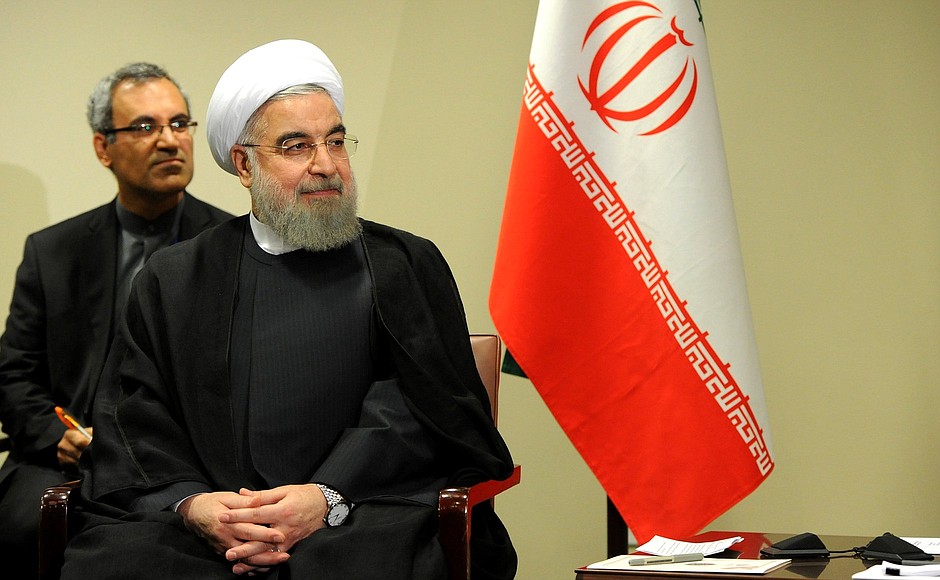
The Trump administration has announced plans to institute additional sanctions against Iran that ostensibly target the Iranian leadership, particularly Supreme Leader Ayatollah Ali Khamenei. The announcement closely follows the shooting down of an American drone by the Iranian Revolutionary Guard; officials of the two nations disagree on whether the drone was occupying international airspace at the time. This latest move by the Trump administration is only the most recent attempt to effect changes in Iranian policy (if not the Iranian leadership altogether), and Secretary of State Mike Pompeo has established 12 demands to be met before diplomatic negotiations proceed.
The sanctions have thus far spurred the only intransigence from Iranian leadership, who claim to have turned entirely against diplomatic discussions. Abbas Mousavi, Iran’s Foreign Ministry spokesman, declared, “The fruitless sanctions on Iran’s leadership and the chief of Iranian diplomacy mean the permanent closure of the road of diplomacy with the frustrated U.S. administration.” For the moment, Iran does not plan to cave under the sanctions. Furthermore, the efficacy of the sanctions, regarded by many as largely symbolic, have been called into question, including by analyst Aaron David Miller, who tweeted, “When was [the] last time sanctions alone changed a nation’s conception of its core political/security interests and forced it to capitulate?”
President Trump has lately been questioning current U.S. obligations to the Persian Gulf and has expressed no direct preference for war. If indeed he prefers peace and also wishes to limit Iran’s military and nuclear capacity through a deal to replace the 2015 nuclear deal, from which he withdrew American participation in 2018, then one must wonder what the latest sanctions purport to accomplish. Iran has borne American sanctions of fluctuating severity since the 1980s, and so the marginal detriment of additional economic pressure may be slight. Likewise, these latest sanctions aim primarily to stifle the access of Iranian leaders to international banking systems, but according to Politico, the Iranian leadership is not believed to extensively use these systems, such that the sanctions are not expected by experts to generate much palpable economic effect. Imposing another series of sanctions as a retaliatory measure hardly defuses the back-and-forth between the two countries, but simply bats attention back to Iran’s next move. The sanctions do serve to signal hostility towards Iranian leadership, but arguably do not possess the concomitant force necessary to pressure the leadership into compliance, if indeed that is the goal. Sanctions are neither new nor unexpected for Iran. Only if the financial holdings of Iranian leadership prove to be as corrupt and far-reaching as alleged by the Trump administration could the sanctions generate an eventual return to diplomacy.
This latest development only continues the straining of American-Iranian relations. After the American drone was shot down on June 20th, Trump called off a retaliatory airstrike 10 minutes prior to execution, citing the disproportionality of the response. Estimates put the prospective death toll of the aborted air strike at 150. Instead, Trump opted for a cyber-attack aiming to disable the weaponry and computer systems that enabled the destruction of the drone. Mohammad-Javad Azari Jahromi, the Iranian Minister of Information and Communications Technology, claimed via Twitter that the cyber-attack was not successful; American sources such as the Washington Post have reported otherwise. Also salient is the fact that Trump already reimposed harsh sanctions in the act of withdrawing from the 2015 Iranian nuclear deal. Since then, Iran has seen steepened inflation at rates of at least 30% and oil exports cut in half. Iranian civilians are most affected, coping with increased unemployment, currently around 12%, and sharply increased prices for basic consumer goods.
Trump’s strategy is undeniably high risk. With considerable attention drawn to the possibility of war between these two nations, an outcome he largely claims to detest, Trump has nonetheless opted for a strategy of applying dissuasive pressure on an unwilling political body, pushing the Iranian leadership further from discussions in the short run. To be successful, Iran will need to capitulate at least by the looming 2020 American presidential election, when the Democrats will have the chance to retake the White House. It bears noting that regardless of the personal attitudes of the leadership of the nations involved, the true recipient of the political outcome is the Iranian citizenry, who currently bear the brunt of the sanctions against Iran and who would be most affected by war. Their well-being may not draw the same attention as outlandish political personalities and intrigues, but the Iranian people remain very directly affected by American policies.
- Pakistan Arrests 22 Protestors As Pro-Independence Protests Continue - September 15, 2019
- Five EU Countries Offer To Take In Refugees Initially Declared Illegal By Italy - September 8, 2019
- Bolsonaro Criticizes G7 Offer Of Funds For Amazonian Fire-Fighting Efforts - September 1, 2019

